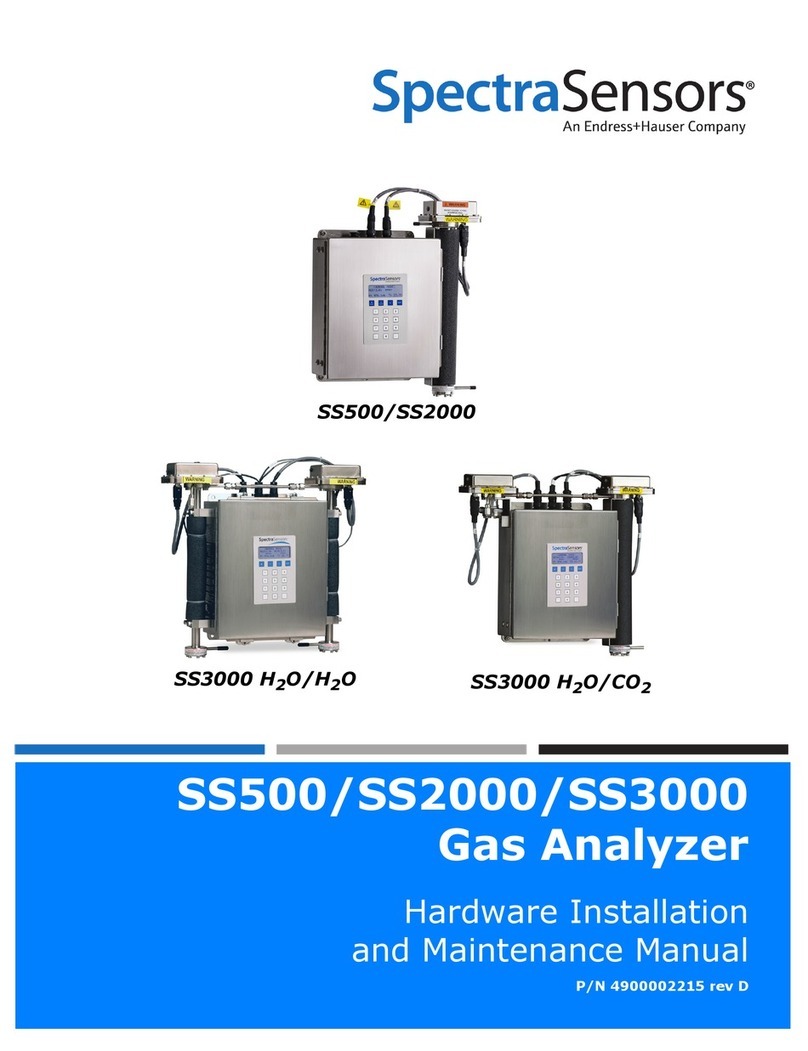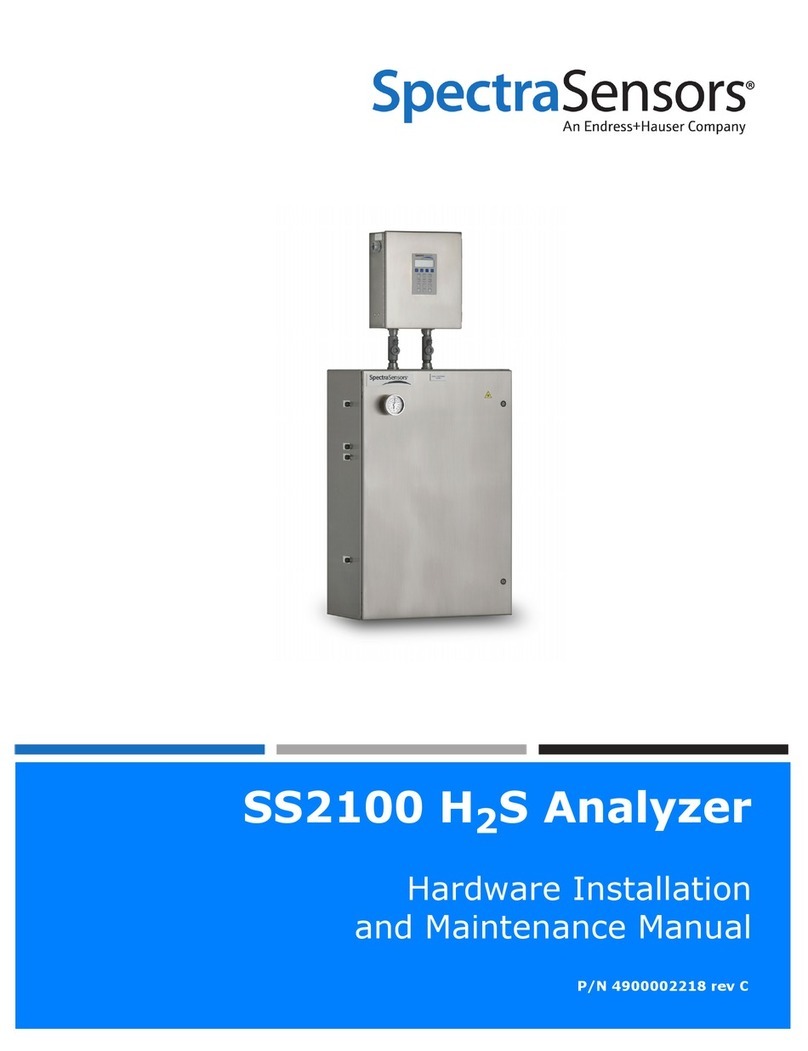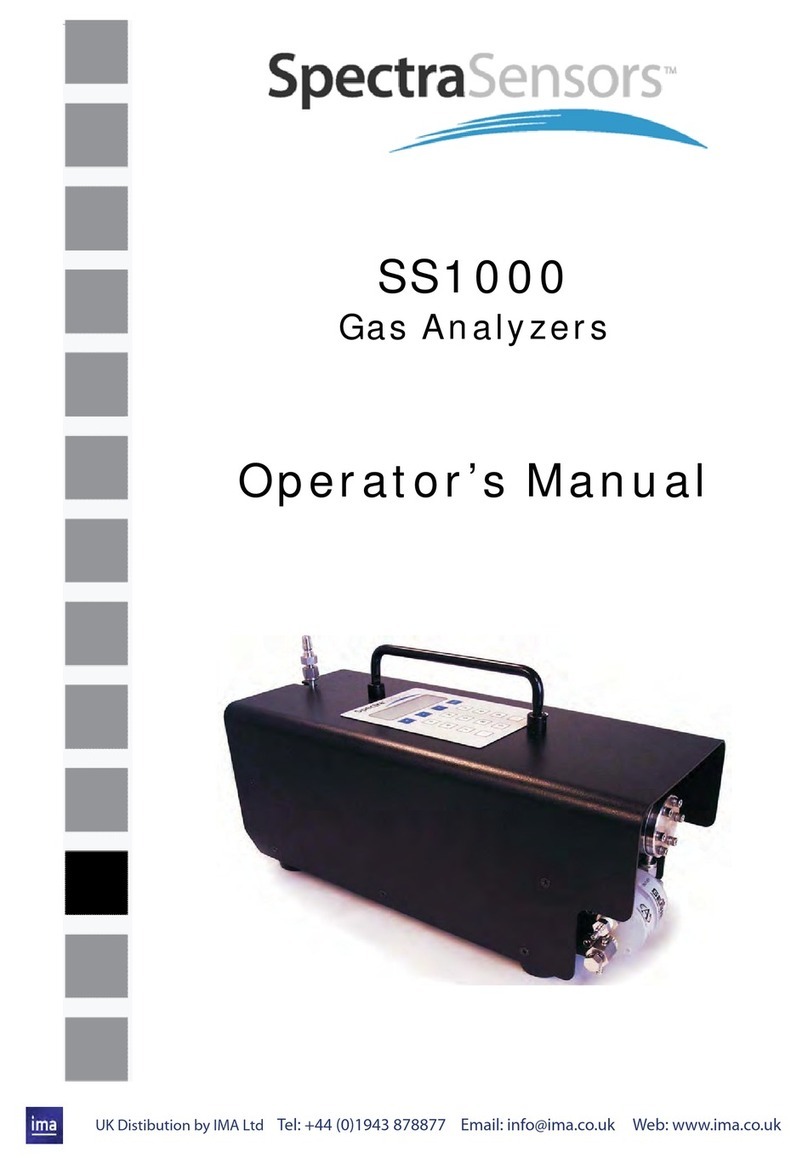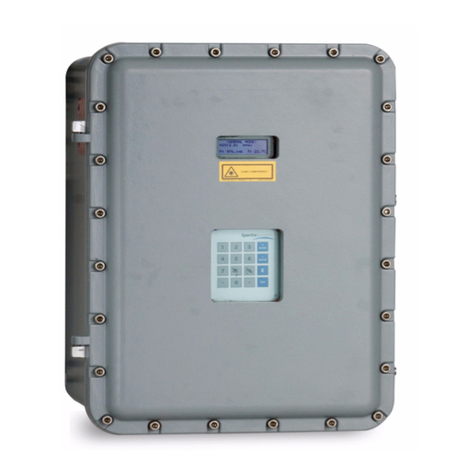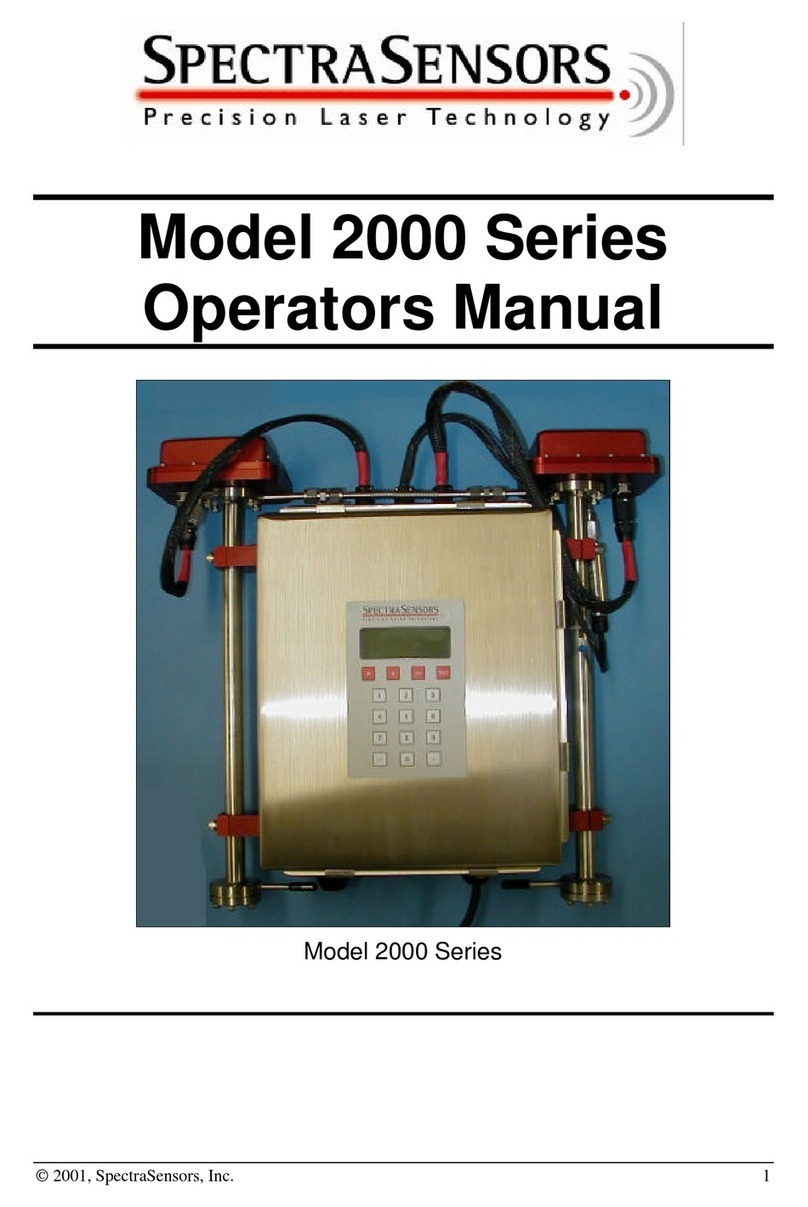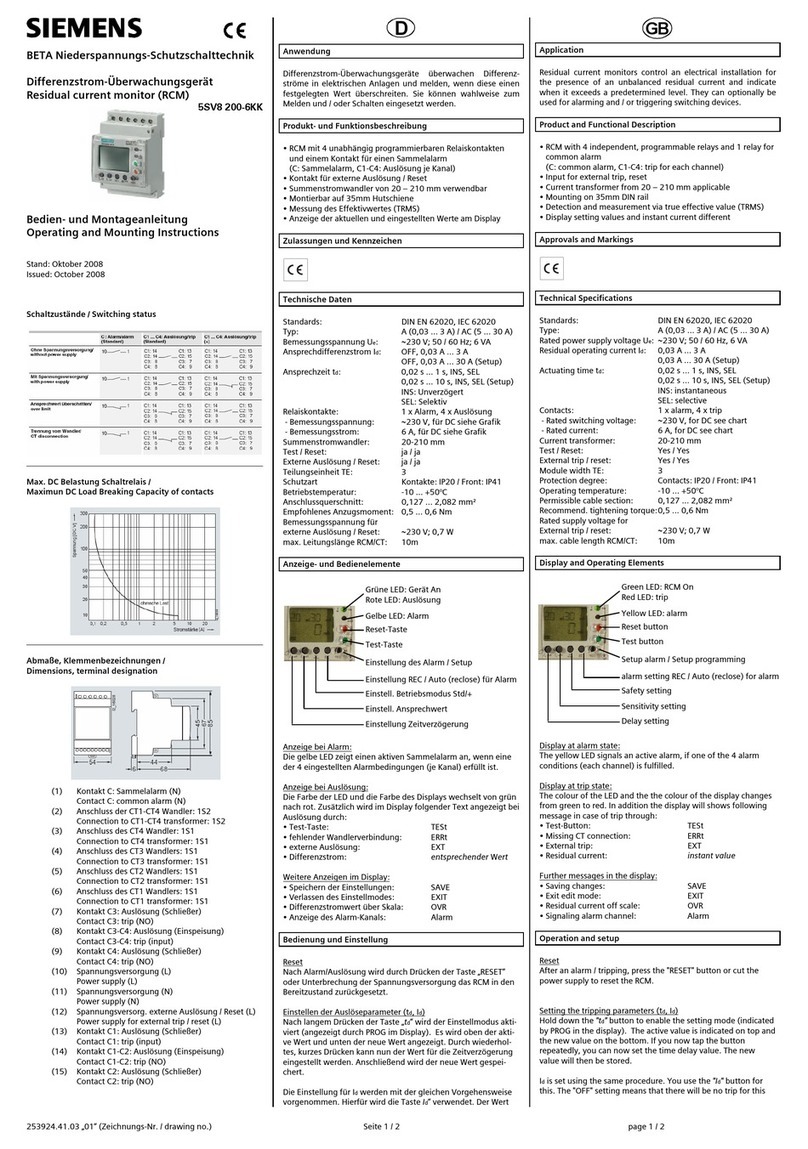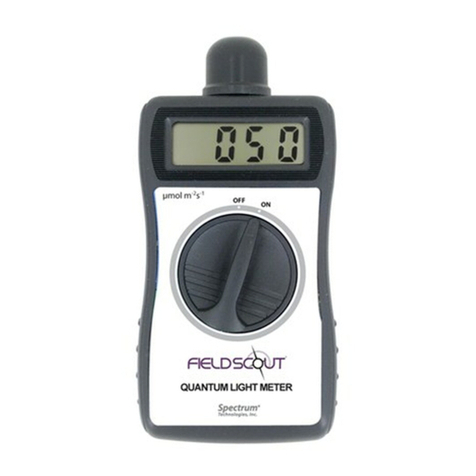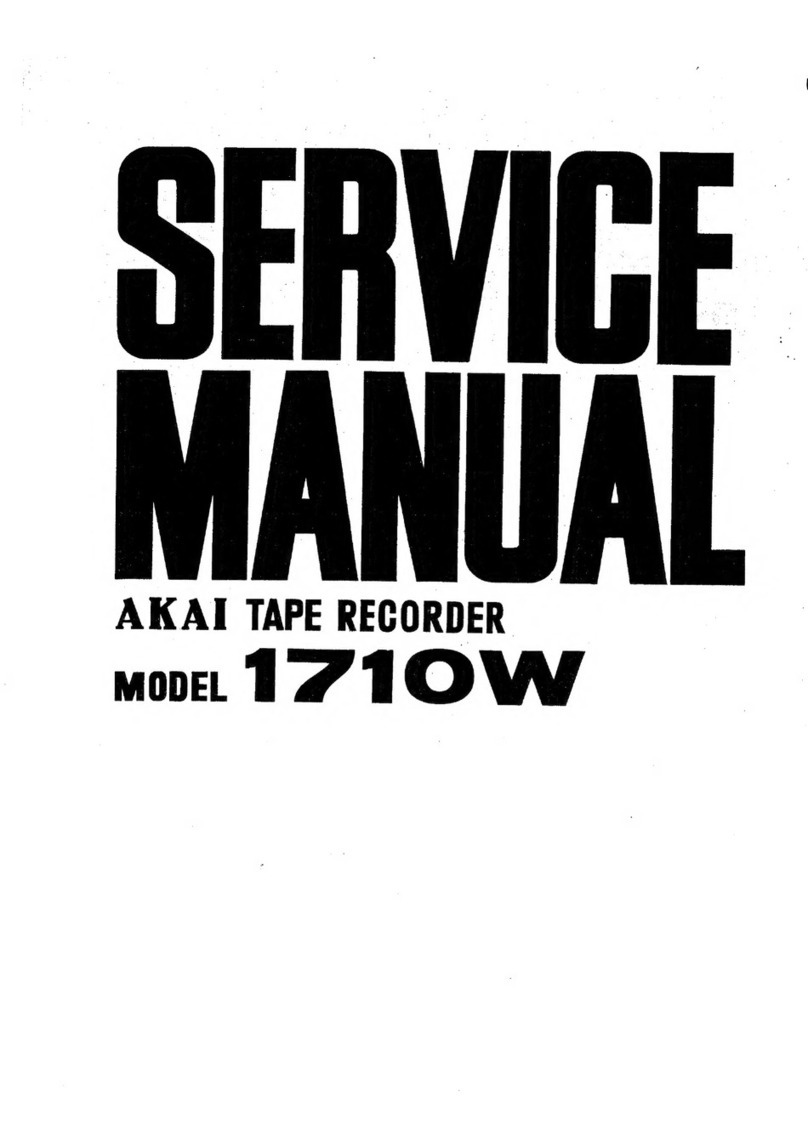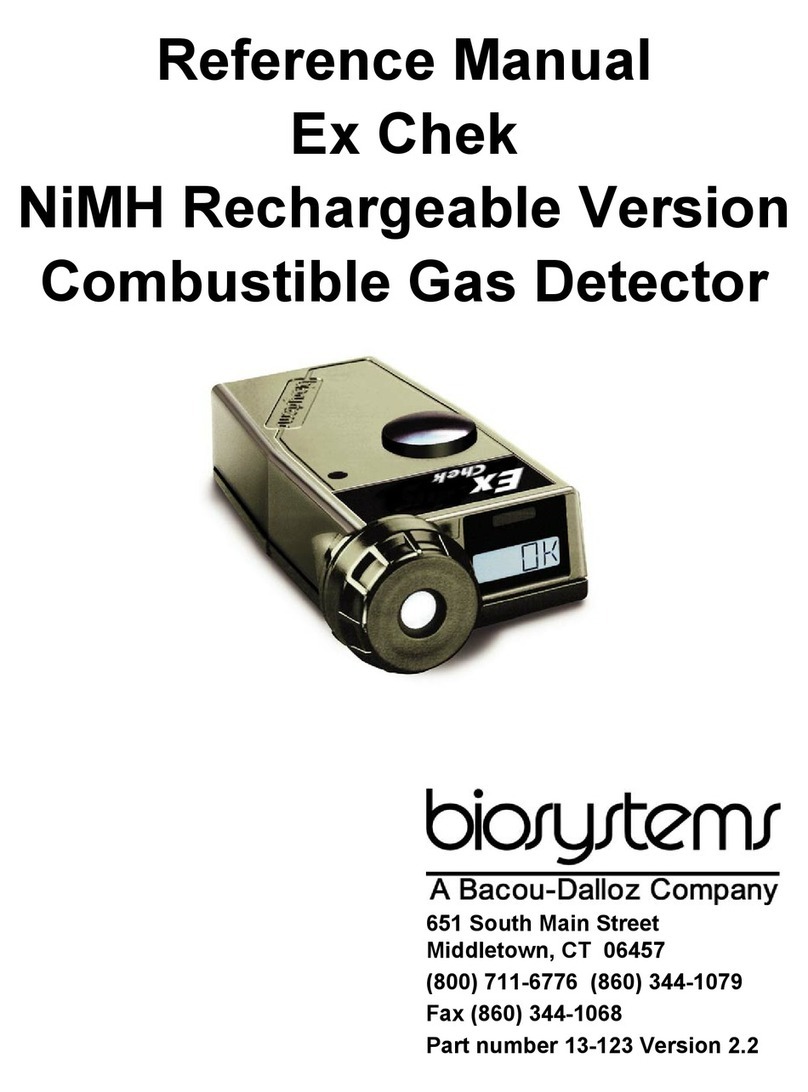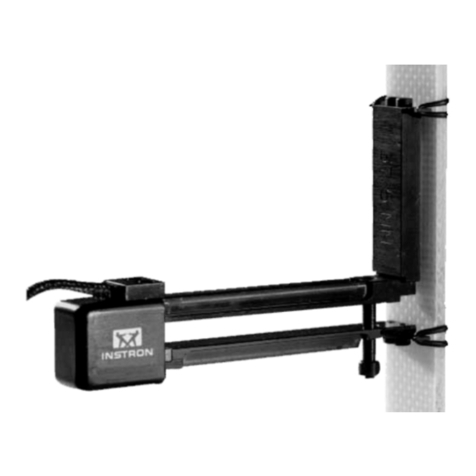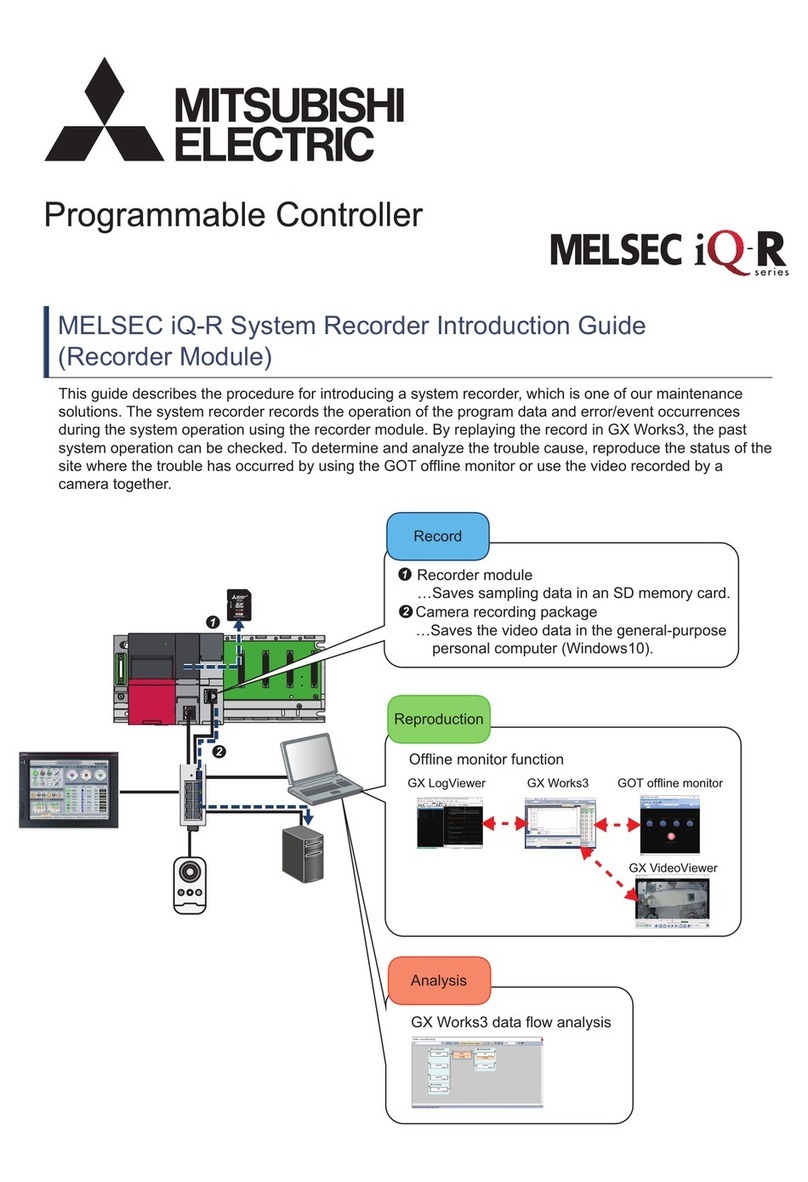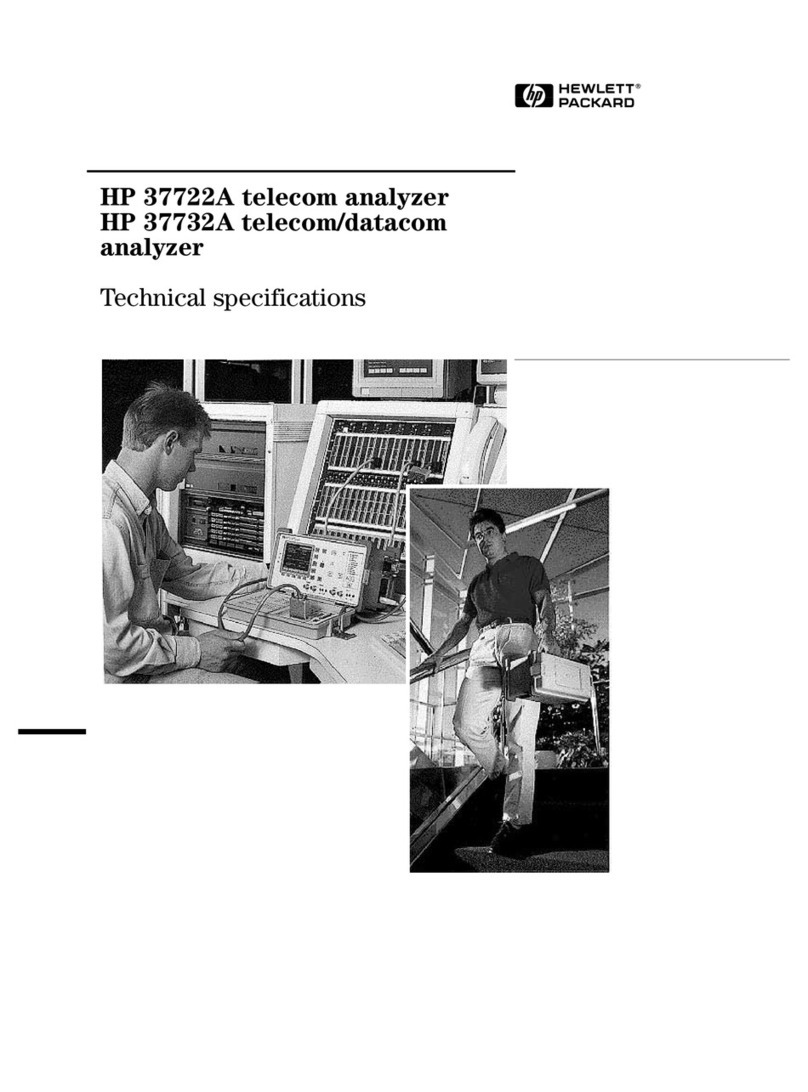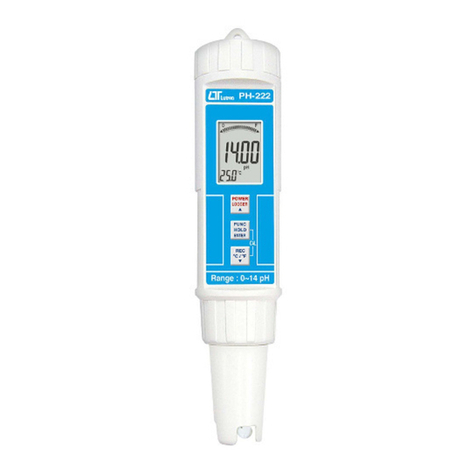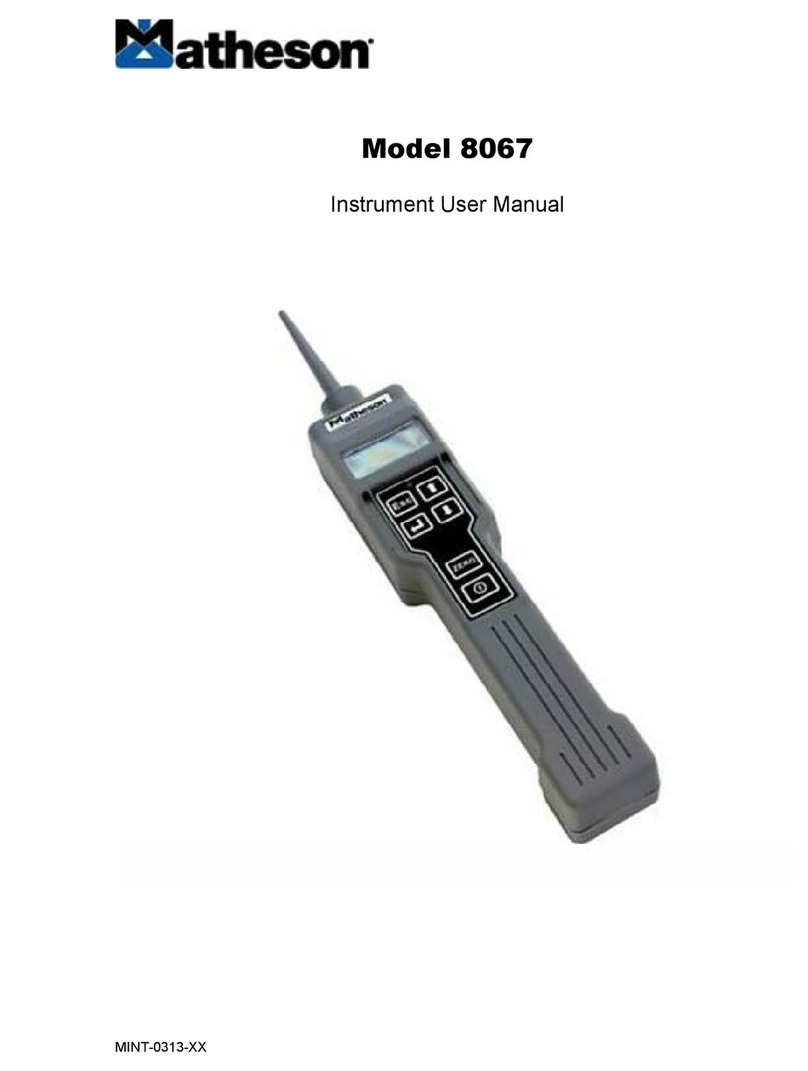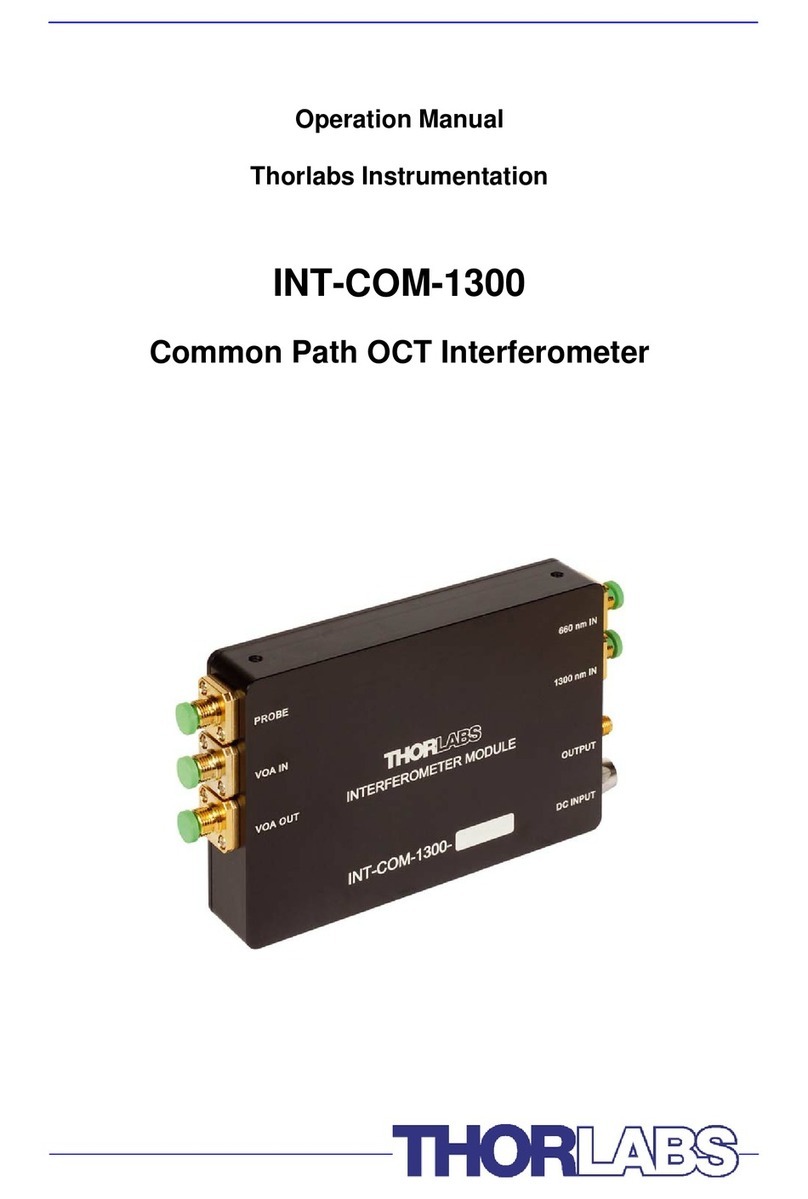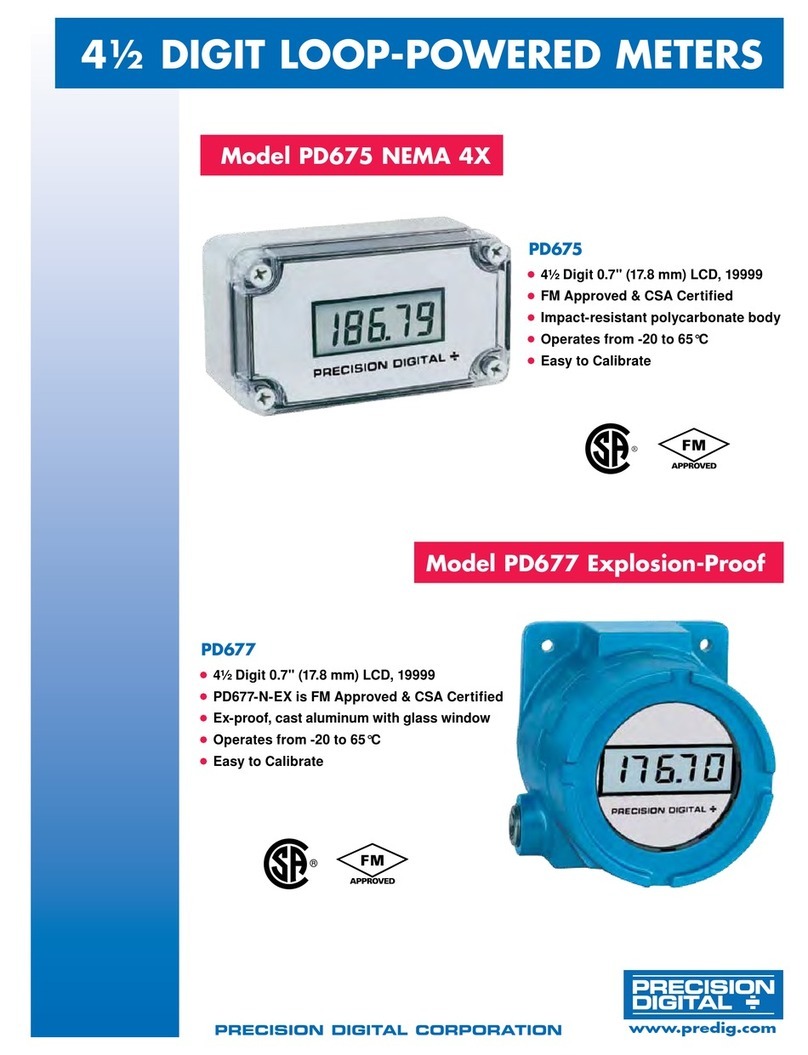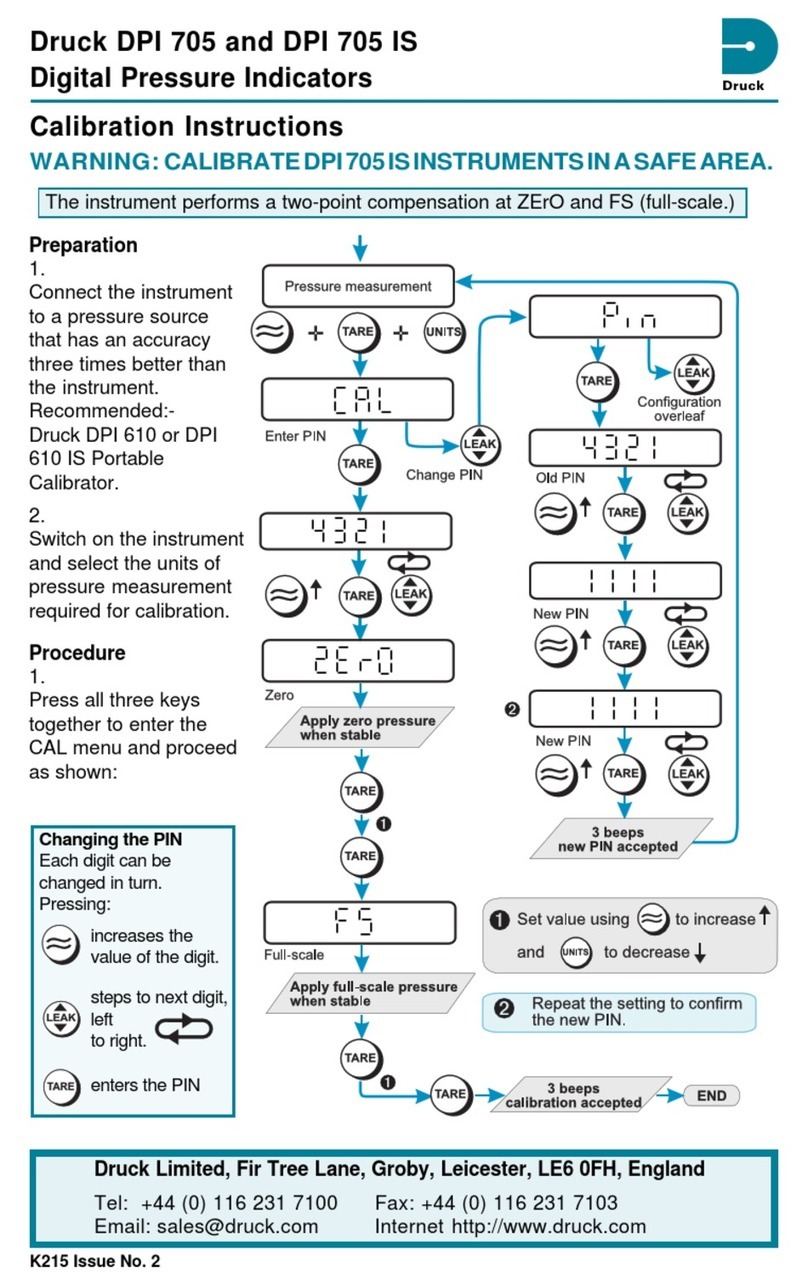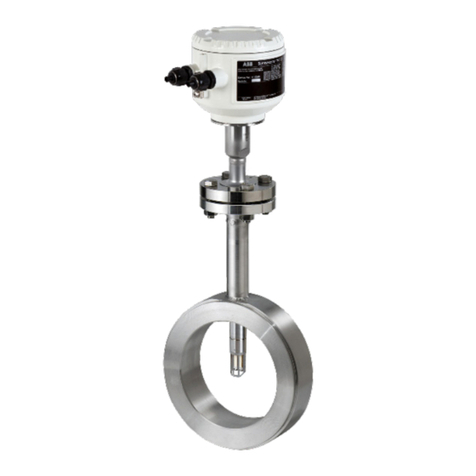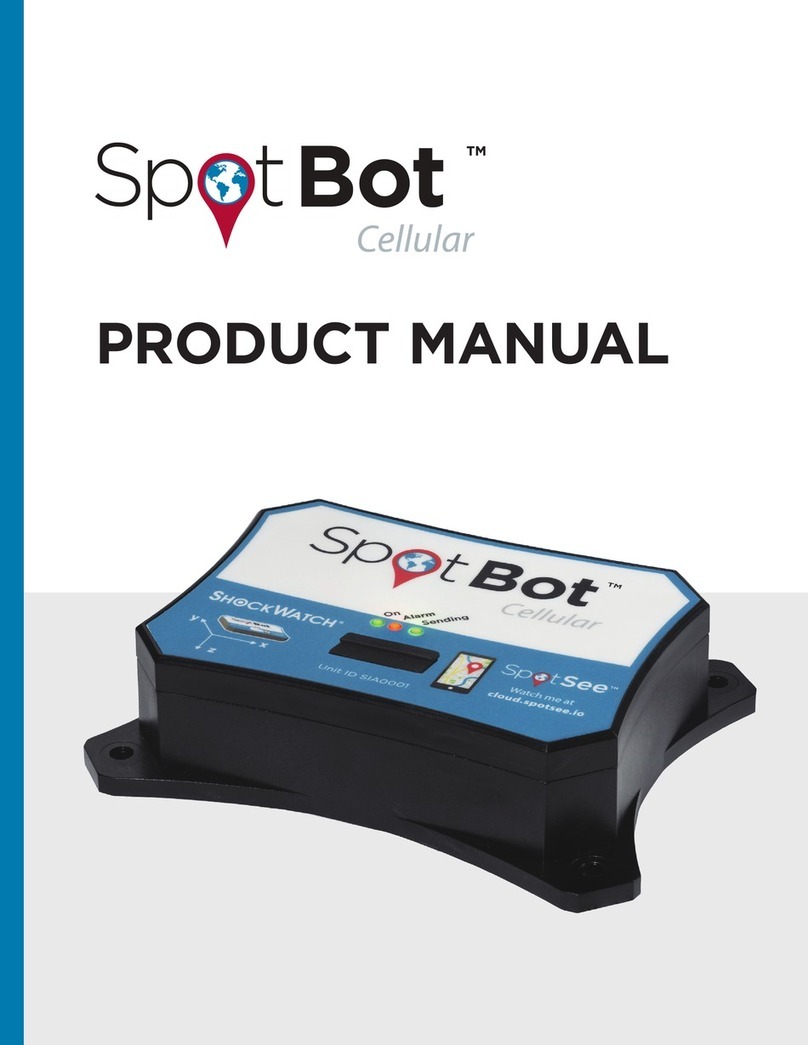Spectrasensors SS2000 User manual

SS2000
Gas Analyzer
Operator’s Manual
H2S in Natural Gas
(U.S.)


Products of
11027 Arrow Route
Rancho Cucamonga, CA 91730
Tel: 800.619.2861
Fax: 909.948.4100
www.spectrasensors.com
Copyright © 2007 SpectraSensors, Inc. No part of this manual may be reproduced in
whole or in part without the express written permission of SpectraSensors, Inc.
SpectraSensors reserves the right to change product design and specifications at any
time without prior notice.
SS2000
Gas Analyzer
Operator’s Manual
H2S in Natural Gas
(U.S.)
PRELIMINARY

THIS PAGE INTENTIONALLY LEFT BLANK

SS2000 Operator’s Manual i
TABLE OF CONTENTS
Table of Contents . . . . . . . . . . . . . . . . . . . . . . . . . . . . . . . . . . . . . . . . . . . . i
List of Figures . . . . . . . . . . . . . . . . . . . . . . . . . . . . . . . . . . . . . . . . . . . . . . iii
List of Tables . . . . . . . . . . . . . . . . . . . . . . . . . . . . . . . . . . . . . . . . . . . . . . . .v
1: Introduction
Who Should Read This Manual . . . . . . . . . . . . . . . . . . . . . . . . . . . . . . . . . . . . 1–1
How to Use This Manual. . . . . . . . . . . . . . . . . . . . . . . . . . . . . . . . . . . . . . . . . 1–1
Special Symbols Used in This Manual . . . . . . . . . . . . . . . . . . . . . . . . . . . . . . . 1–2
General Warnings and Cautions . . . . . . . . . . . . . . . . . . . . . . . . . . . . . . . . . 1–2
SpectraSensors Overview . . . . . . . . . . . . . . . . . . . . . . . . . . . . . . . . . . . . . . . 1–3
About the Gas Analyzer . . . . . . . . . . . . . . . . . . . . . . . . . . . . . . . . . . . . . . . . . 1–4
How the Analyzer Works . . . . . . . . . . . . . . . . . . . . . . . . . . . . . . . . . . . . . . . . 1–4
2: Installation
What Should be Included in the Shipping Box . . . . . . . . . . . . . . . . . . . . . . . . . 2–1
Inspecting the Analyzer and Sample Conditioning System . . . . . . . . . . . . . . . . . 2–1
Installing the Analyzer and Sample Conditioning System . . . . . . . . . . . . . . . . . . 2–1
Hardware and Tools for Installation. . . . . . . . . . . . . . . . . . . . . . . . . . . . . . . . . 2–2
Hardware: . . . . . . . . . . . . . . . . . . . . . . . . . . . . . . . . . . . . . . . . . . . . . . . 2–2
Tools:. . . . . . . . . . . . . . . . . . . . . . . . . . . . . . . . . . . . . . . . . . . . . . . . . . . 2–2
Mounting the Analyzer. . . . . . . . . . . . . . . . . . . . . . . . . . . . . . . . . . . . . . . . . . 2–3
To mount the analyzer: . . . . . . . . . . . . . . . . . . . . . . . . . . . . . . . . . . . . . . 2–3
Connecting Electrical Power to the Analyzer . . . . . . . . . . . . . . . . . . . . . . . . . . . 2–3
To connect electrical power to the analyzer: . . . . . . . . . . . . . . . . . . . . . . . . 2–4
Connecting Electrical Power to the Optional Enclosure Heater. . . . . . . . . . . . . . . 2–6
To connect electrical power to the optional enclosure heater: . . . . . . . . . . . . 2–6
Connecting Electrical Power to an Analyzer with an Optional Type X Purge. . . . . . 2–8
Connecting the Input and Output Signals. . . . . . . . . . . . . . . . . . . . . . . . . . . . 2–10
To connect the signal cables: . . . . . . . . . . . . . . . . . . . . . . . . . . . . . . . . . 2–10
Connecting the Gas Lines. . . . . . . . . . . . . . . . . . . . . . . . . . . . . . . . . . . . . . . 2–12
To connect the sample inlet line: . . . . . . . . . . . . . . . . . . . . . . . . . . . . . . . 2–13
To connect the sample return line:. . . . . . . . . . . . . . . . . . . . . . . . . . . . . . 2–14
Connecting the Optional Automatic Validation Gas (If Applicable) . . . . . . . . . . . 2–14
To connect the validation source: . . . . . . . . . . . . . . . . . . . . . . . . . . . . . . 2–14
To connect the optional purge system: . . . . . . . . . . . . . . . . . . . . . . . . . . . 2–15
Conditioning the Analyzer Tubing . . . . . . . . . . . . . . . . . . . . . . . . . . . . . . . . . 2–16
3: Operating the SS2000 System
Powering Up the Analyzer . . . . . . . . . . . . . . . . . . . . . . . . . . . . . . . . . . . . . . . 3–1
To Power up the Analyzer: . . . . . . . . . . . . . . . . . . . . . . . . . . . . . . . . . . . . 3–1
Powering Down the Analyzer . . . . . . . . . . . . . . . . . . . . . . . . . . . . . . . . . . . . . 3–2
To Power Down the Analyzer: . . . . . . . . . . . . . . . . . . . . . . . . . . . . . . . . . . 3–2
Operating the Analyzer from the Keypad . . . . . . . . . . . . . . . . . . . . . . . . . . . . . 3–3
Modes and Functions Defined . . . . . . . . . . . . . . . . . . . . . . . . . . . . . . . . . . . . . 3–4
Mode 1: (Normal Mode). . . . . . . . . . . . . . . . . . . . . . . . . . . . . . . . . . . . 3–4
Mode 2: (Set Parameter Mode). . . . . . . . . . . . . . . . . . . . . . . . . . . . . . . 3–5
Mode 3: Not Used . . . . . . . . . . . . . . . . . . . . . . . . . . . . . . . . . . . . . . . . 3–5
To change parameters in Mode 2: . . . . . . . . . . . . . . . . . . . . . . . . . . . . . . . 3–5
Spectrum Average . . . . . . . . . . . . . . . . . . . . . . . . . . . . . . . . . . . . . . . 3–5
High Alarm Action . . . . . . . . . . . . . . . . . . . . . . . . . . . . . . . . . . . . . . . . 3–6
Logger Rate . . . . . . . . . . . . . . . . . . . . . . . . . . . . . . . . . . . . . . . . . . . . 3–7
Temperature Unit . . . . . . . . . . . . . . . . . . . . . . . . . . . . . . . . . . . . . . . . 3–7

ii H2S in Hydrogen Recycle
Pressure Unit . . . . . . . . . . . . . . . . . . . . . . . . . . . . . . . . . . . . . . . . . . . 3–7
Concentration Unit . . . . . . . . . . . . . . . . . . . . . . . . . . . . . . . . . . . . . . . 3–8
Peak Tracking. . . . . . . . . . . . . . . . . . . . . . . . . . . . . . . . . . . . . . . . . . . 3–8
Cancel Scrub Alarm. . . . . . . . . . . . . . . . . . . . . . . . . . . . . . . . . . . . . . . 3–8
4/20 Alarm Option . . . . . . . . . . . . . . . . . . . . . . . . . . . . . . . . . . . . . . . 3–9
Cancel General Alarm . . . . . . . . . . . . . . . . . . . . . . . . . . . . . . . . . . . . . 3–9
Mode 4: (System Diagnostic Parameters - Channel A). . . . . . . . . . . . . . . 3–9
Mode 5: (System Diagnostic Parameters - Channel B). . . . . . . . . . . . . . 3–10
Mode 6: (Diagnostic Data Download) . . . . . . . . . . . . . . . . . . . . . . . . . 3–10
Scaling and Calibrating the Current Loop Signal . . . . . . . . . . . . . . . . . . . . . . . 3–10
To scale the current loop signal: . . . . . . . . . . . . . . . . . . . . . . . . . . . . . . . 3–10
Alarms. . . . . . . . . . . . . . . . . . . . . . . . . . . . . . . . . . . . . . . . . . . . . . . . . . . . 3–12
Receiving Serial Data (RS-232 Output) . . . . . . . . . . . . . . . . . . . . . . . . . . . . . 3–13
To launch HyperTerminal: . . . . . . . . . . . . . . . . . . . . . . . . . . . . . . . . . . . . 3–13
To capture and save data from the serial port: . . . . . . . . . . . . . . . . . . . . . 3–16
To read diagnostic data with HyperTerminal:. . . . . . . . . . . . . . . . . . . . . . . 3–16
Viewing Diagnostic Data with Microsoft Excel . . . . . . . . . . . . . . . . . . . . . . . . . 3–17
To import the data file into Excel: . . . . . . . . . . . . . . . . . . . . . . . . . . . . . . 3–17
Validating the Analyzer . . . . . . . . . . . . . . . . . . . . . . . . . . . . . . . . . . . . . . . . 3–20
Calibrating the Analyzer. . . . . . . . . . . . . . . . . . . . . . . . . . . . . . . . . . . . . . . . 3–21
4: Gas Sample Conditioning System - H2S in Natural Gas
About the Sample Conditioning System . . . . . . . . . . . . . . . . . . . . . . . . . . . . . . 4–1
Operating the Sample Conditioning System. . . . . . . . . . . . . . . . . . . . . . . . . 4–1
Servicing the Scrubber . . . . . . . . . . . . . . . . . . . . . . . . . . . . . . . . . . . . . . . . . 4–4
To Replace the Scrubber and Scrubber Indicator: . . . . . . . . . . . . . . . . . . . . 4–5
Appendix A: Troubleshooting
Gas Leaks . . . . . . . . . . . . . . . . . . . . . . . . . . . . . . . . . . . . . . . . . . . . . . . . . . A–1
Contamination . . . . . . . . . . . . . . . . . . . . . . . . . . . . . . . . . . . . . . . . . . . . . . . A–1
To keep the sampling lines clean: . . . . . . . . . . . . . . . . . . . . . . . . . . . . . . . A–1
Cleaning the Mirrors . . . . . . . . . . . . . . . . . . . . . . . . . . . . . . . . . . . . . . . . . . . A–2
Tools and Supplies: . . . . . . . . . . . . . . . . . . . . . . . . . . . . . . . . . . . . . . . . . A–2
To clean the mirrors: . . . . . . . . . . . . . . . . . . . . . . . . . . . . . . . . . . . . . . . . A–2
Excessive Sampling Gas Temperatures and Pressures . . . . . . . . . . . . . . . . . . . . A–3
Electrical Noise . . . . . . . . . . . . . . . . . . . . . . . . . . . . . . . . . . . . . . . . . . . . . . . A–3
Instrument Problems. . . . . . . . . . . . . . . . . . . . . . . . . . . . . . . . . . . . . . . . . . . A–4
Service Contact . . . . . . . . . . . . . . . . . . . . . . . . . . . . . . . . . . . . . . . . . . . . . . A–7
Disclaimers . . . . . . . . . . . . . . . . . . . . . . . . . . . . . . . . . . . . . . . . . . . . . . . . . A–8
Warranty . . . . . . . . . . . . . . . . . . . . . . . . . . . . . . . . . . . . . . . . . . . . . . . . . . . A–8
Appendix B: Specifications
Index . . . . . . . . . . . . . . . . . . . . . . . . . . . . . . . . . . . . . . . . . . . . . . . . . . . . . .1

SS2000 Operator’s Manual iii
LIST OF FIGURES
Figure 1–1: Schematic of a typical laser diode absorption spectrometer. 1–5
Figure 1–2: Typical raw signal from a laser diode absorption spectrometer with and
without mirror contamination. 1–6
Figure 1–3: Typical normalized absorption signal from a laser diode absorption
spectrometer. 1–7
Figure 1–4: Typical normalized 2fsignal where the species concentration is propor-
tional to the peak height. 1–7
Figure 2–1: AC connection terminal block in control box. 2–5
Figure 2–2: DC connection terminal block in control box. 2–6
Figure 2–3: AC connection terminal block for optional enclosure heater. 2–7
Figure 2–4: Type X enclosure purge wiring. 2–9
Figure 2–5: Mating terminal block for connecting signal cables. 2–11
Figure 2–6: SS2000 electronics control board showing signal terminal block and
alarm relays. 2–13
Figure 3–1: SS2000 LCD display. 3–2
Figure 3–2: SS2000/3000 Keypad. 3–3
Figure 3–3: SS2000 measurement display. 3–4
Figure 3–4: Temperature and pressure sensor cable connection. 3–11
Figure 3–5: Connection Description window. 3–14
Figure 3–6: Connect To window. 3–14
Figure 3–7: COM Properties window. 3–15
Figure 3–8: Hyperterminal window with streaming data. 3–16
Figure 3–9: Sample diagnostic data output. 3–18
Figure 3–10: Opening a data file in Excel. 3–19
Figure 3–11: Setting data type in Text Import Wizard. 3–19
Figure 3–12: Setting Tab and Space as delimiters. 3–20
Figure 3–13: Highlighting imported data for plotting in excel. 3–21
Figure 3–14: Chart Wizard - Step 1 window. 3–22
Figure 3–15: Data file plot in Excel. 3–22
Figure 3–16: Format Data Series window. 3–23
Figure 4–1: Flow schematic of SS2000 for H2S in natural gas. 4–2
Figure 4–2: Flow schematic continued of SS2000 for H2S in natural gas. 4–3
Figure 4–3: Scrubber and scrubber indicator. 4–4
Figure 4–4: Scrubber indicator showing H2S breakthrough. 4–5
Figure B–1: Outline schematic of SS2000 for H2S in Natural Gas. B–2
Figure B–2: Flow schematic of SS2000 for H2S in Natural Gas. B–3
Figure B–3: Electrical schematic of SS2000 for H2S in Natural Gas. B–4

iv H2S in Natural Gas
THIS PAGE INTENTIONALLY LEFT BLANK

SS2000 Operator’s Manual v
LIST OF TABLES
Table 2–1: Output/Input signal connections. 2–12
Table 3–1: Typical values for parameter setpoints. 3–6
Table A–1: Potential instrument problems and their solutions. A–4
Table B-1: SS2000 H2S in Natural Gas Analyzer Specifications. B–1

vi H2S in Natural Gas
THIS PAGE INTENTIONALLY LEFT BLANK

SS2000 Operator’s Manual 1–1
1 - INTRODUCTION
The SpectraSensors SS2000 is a high-speed, diode-laser based extractive
analyzer designed for extremely reliable monitoring of very low (trace) to
standard concentrations of specific components in various background gases.
In order to ensure that the analyzer performs as specified, it is important to
pay close attention to the details of the installation and operation. This manual
contains a comprehensive overview of the SS2000 analyzer, and step-by-step
instructions on:
•Inspecting the Analyzer and Sample Conditioning System
•Installing the Analyzer and Sample Conditioning System
•Powering Up the Analyzer
•Operating the SS2000 System
•Receiving Serial Data (RS-232 Output)
•Powering Down the Analyzer
•Troubleshooting
Who Should Read This Manual
This manual should be read and referenced by anyone installing, operating, or
having contact with the analyzer.
How to Use This Manual
Take a moment to familiarize yourself with this Operator’s Manual by reading
the Table of Contents.
Because there are many options and accessories available for the SS2000, this
manual has been assembled in a modular fashion with sections addressing the
specific options and accessories ordered with this particular unit. Read each
section in the manual carefully so you can quickly and easily install and operate
the analyzer.
The manual includes images, tables, and charts that provide a visual
understanding of the analyzer and its functions. Special symbols are also used
to make you aware of potential hazards, important information, and valuable
tips. Pay close attention to this information.

Introduction
1–2 H2S in Natural Gas
Special Symbols Used in This Manual
This manual uses the following symbols to represent potential hazards, caution
alerts, and important information associated with the analyzer. Every symbol
has significant meaning that should be heeded.
General Warnings and Cautions
Following are general warnings and cautions to observe when servicing the
analyzer.
This icon denotes a warning statement. Warning statements
indicate a potentially hazardous situation, which, if not avoided,
may result in serious injury or death.
Failure to follow all directions may result in fire.
Class IIIb radiation product. When open, avoid exposure to beam.
Failure to follow all directions may result in damage or
malfunction of the analyzer.
Important information concerning the installation and operation
of the analyzer.
Explosion hazard. Substitution of components may impair
suitability for Class 1, Div. 2.
Explosion hazard. Do not connect or disconnect equipment unless
power has been switched off or the area is known to be non-
hazardous.

SS2000 Operator’s Manual
H2S in Natural Gas 1–3
SpectraSensors Overview
SpectraSensors, Inc. (SSI) is a leading manufacturer of state-of-the-art
electro-optic gas analyzers for the industrial process, gas distribution and
environmental monitoring markets. Headquartered in Rancho Cucamonga,
California, SSI was incorporated in 1999 as a spin-off of the NASA/Caltech Jet
Always disconnect the main power to the instrument before
attempting any repair.
Read and understand all instructions before attempting to operate
the instrument. Observe all caution notes and warning labels.
Class IIIb invisible laser radiation. When open, avoid exposure to
beam. Conforms to provisions of US 21 CFR1040 10. Class I laser
product. Refer servicing to the manufacturer’s qualified
personnel.
Use a damp cloth to clean display and keypad to avoid static
electricity discharge.
Do not exceed 10 psig (0.7 barg) in sample cell. Damage to cell
window may result.
Do not hold or carry the analyzer by the measurement heads or
sample cells. Doing so may cause optical alignment problems
affecting the performance of the sensor.
When selecting an analyzer, the total system design must be
considered to ensure safe, trouble-free performance. Function,
sizing, proper installation, operation, and maintenance are
beyond the control of SpectraSensors and are the responsibilities
of the system designer and user.
If equipment is used in a manner not specified by the
manufacturer, the protection provided by the manufacturer may
be impaired.

Introduction
1–4 H2S in Natural Gas
Propulsion Laboratory (JPL) with the purpose of commercializing space proven
measurement technologies initially developed at JPL.
Typical applications include real-time measurement of moisture, carbon dioxide
and corrosives (H2S) in natural gas, energy content of natural gas (BTU), trace
moisture and hydrogen sulfide in refineries and petrochemical plants, airborne
moisture and other atmospheric measurements from commercial aircraft for
Weather Services, and CO2, CO, H2, O2, H2, N2, H2S, C2H4, C2H4O, CH4, Cl2,
and many other species in various carrier gases for industrial process control
and EPA emissions compliance.
About the Gas Analyzer
The SS2000 is a tunable diode laser (TDL) absorption spectrometer operating
in the near- or mid-infrared. Each compact sensor consists of a TDL light
source, sample cell and detector specifically configured to enable high
sensitivity measurement of a particular component(s) without regard to other
gas phase constituents in the stream. The sensor is controlled by
microprocessor-based electronics with embedded software that incorporates
advanced operational and data processing algorithms. Typically, an appropriate
sample conditioning system is also included that assures that the analyzer is
receiving sample gas that can be correctly measured.
Each SS2000 is specifically configured for use at pipeline sampling stations,
refineries, plastics plants, or wherever accurate real-time measurements are
required over a wide measurement range. Depending on the particular
accessories and options ordered, the system may also include, for example, a
differential switching system that enables the sensor to compare the content
of the sample to a reference gas, and/or a heated enclosure for highest
sensitivity, and/or a purge system for purging flammable gasses ensuring safe
operation in hazardous environments, just to name a few.
How the Analyzer Works
The SS2000 analyzer employs tunable diode laser absorption spectroscopy
(TDLAS) to detect the presence of trace substances in process gases.
Absorption spectroscopy is a widely used technique for sensitive trace species
detection. Because the measurement is made in the volume of the gas, the
response is much faster, more accurate and significantly more reliable than
traditional surface-based sensors that are subject to surface contamination.
In its simplest form, a diode laser absorption spectrometer typically consists of
a sample cell with a mirror at one end and a mirror or window at the other
through which the laser beam can pass, as shown in Figure 1–1. The laser
beam enters the cell and reflects off the mirror(s) making one or more trips
through the sample gas and eventually exiting the cell where the remaining
beam energy is measured by a detector. With the SS2000 analyzer, sample gas
flows continuously through the sample cell ensuring that the sample is always
representative of the flow in the main pipe.

SS2000 Operator’s Manual
H2S in Natural Gas 1–5
Due to their inherent structure, the molecules in the sample gas each have
characteristic natural frequencies (or resonances). When the output of the
laser is tuned to one of those natural frequencies, the molecules with that
particular resonance will absorb energy from the incident beam. That is, as the
beam of incident energy, I0(λ),passes through the sample, attenuation occurs
via absorption by the trace gas with absorption coefficient α(λ). According to
the Beer-Lambert absorption law, the energy remaining, I(λ), as measured by
the detector at the end of the beam path of length l(cell length ×number of
passes), is given by
,(1)
where crepresents the species concentration. Thus, the ratio of the absorption
measured when the laser is tuned on-resonance versus off-resonance is
directly proportional to the number of molecules of that particular species in
the beam path, or
.(2)
Figure 1–2 shows typical raw data from a laser absorption spectrometer scan
including the incident laser energy, I0(λ),and the signal, I(λ), for a clean system
and one with contaminated mirrors (shown to illustrate the systems relative
insensitivity to mirror contamination). The positive slope of the raw data results
from current tuning the laser, which not only increases the wavelength with
current, but also causes the corresponding output power to increase. By
normalizing the signal by the incident energy, any laser output fluctuations are
cancelled, and a typical, yet more pronounced, absorption profile results, as
shown in Figure 1–3. Note that contamination of the mirrors results solely in
lower overall signal. However, by tuning the laser off-resonance as well as on-
L
D
DETECTOR
LASER
MIRROR MIRROR
I0(λ)
I(λ)
TRACE GAS ABSORPTION
α(λ)
GAS IN
GAS OUT
Figure 1–1 Schematic of a typical laser diode
absorption spectrometer.
Iλ() I0λ()exp αλ()lc–[]=
c1–
αλ()l
--------------Iλ()
I0λ()
-------------
ln=

Introduction
1–6 H2S in Natural Gas
resonance and normalizing the data, the technique self calibrates every scan
resulting in measurements that are unaffected by mirror contamination.
SpectraSensors takes the fundamental absorption spectroscopy concept a step
further by using a sophisticated signal detection technique called wavelength
modulation spectroscopy (WMS). When employing WMS, the laser drive
current is modulated with a kHz sine wave as the laser is rapidly tuned. A lock-
in amplifier is then used to detect the harmonic component of the signal that
is at twice the modulation frequency (2f), as shown in Figure 1–4. This phase-
sensitive detection enables the filtering of low-frequency noise caused by
turbulence in the sample gas, temperature and/or pressure fluctuations, low-
frequency noise in the laser beam or thermal noise in the detector.
With the resulting low-noise signal and use of fast post processing algorithms
combined with careful calibration to correct for secondary effects caused by
temperature and pressure variations and occasional spectral overlap with
background species, reliable parts per million (ppm) or even parts per billion
(ppb) detection levels are possible (depending on target and background
species) at real-time response rates (on the order of 1 second).
All SpectraSensors TDL gas analyzers employ the same design and hardware
platform. Measuring different trace gases such as H2O, C2H2, H2S, NH3, CO2,
CO and O2in various mixed hydrocarbon background streams, including
natural gas (alkanes), ethylene, propylene, refinery fuel gas, hydrogen
reformer gas, syngas and others, is accomplished by simply choosing a
different optimum diode laser wavelength between 700 nm and 3000 nm
which provides the least amount of sensitivity to background stream variations.
Figure 1–2 Typical raw signal from a laser diode
absorption spectrometer with and without mirror
contamination.

SS2000 Operator’s Manual
H2S in Natural Gas 1–7
Figure 1–3 Typical normalized absorption signal
from a laser diode absorption spectrometer.
Figure 1–4 Typical normalized 2fsignal where the
species concentration is proportional to the peak
height.

Introduction
1–8 H2S in Natural Gas
Use of ultra high reliability optical telecommunications diode lasers
(manufactured to stringent Telcordia GR 468 specifications), 316L stainless
steel, sapphire protected optical reflectors, absence of any moving parts and
tolerance to condensation of process liquids and accumulation of particulates
from gas streams eliminates requirements for field calibration and frequent
maintenance making SpectraSensors TDL analyzers the highest reliability and
lowest total cost of ownership gas analyzer platform.

SS2000 Operator’s Manual 2–1
2 - INSTALLATION
This section describes the processes used to initially install and configure your
SS2000. Once the analyzer arrives, you should take a few minutes to examine
the contents before installing the unit. This section discusses:
•What Should be Included in the Shipping Box
•Inspecting the Analyzer and Sample Conditioning System
What Should be Included in the Shipping Box
The contents of the crates should include:
•The SpectraSensors SS2000 with sample conditioning system (if
applicable)
•This Operator’s Manual with instructions on installing and operating
the analyzer
•One or two (if a dual-channel unit) external serial cables to connect
the analyzer to a computer to receive and transmit data
•Additional accessories or options as ordered
If any of these contents are missing, contact your sales representative.
Inspecting the Analyzer and Sample Conditioning
System
Unpack and place the unit on a flat surface. Carefully inspect all enclosures for
dents, dings, or general damage. Inspect the inlet and outlet connections for
damage, such as bent tubing. Report any damage to the carrier.
Each analyzer is custom configured with various accessories and options.
Confirm that you have received the correct unit. If there is any discrepancy,
please contact your sales representative.
Installing the Analyzer and Sample Conditioning
System
Installing the analyzer is relatively easy requiring only a few steps that, when
carefully followed, will ensure proper mounting and connection. This section
includes:
•Hardware and Tools for Installation
•Mounting the Analyzer
•Connecting Electrical Power to the Analyzer
•Connecting the Input and Output Signals

Installation
2–2 H2S in Natural Gas
•Connecting the Gas Lines
•Powering Up the Analyzer
•Powering Down the Analyzer
Hardware and Tools for Installation
Depending on the particular configuration of accessories and options ordered,
you may need the following hardware and tools to complete the installation
process.
Hardware:
•Membrane separator filter (if not included)
•Pressure regulator (if not included)
•1/2” Unistrut®(or equivalent) bolts and spring nuts
•Stainless steel tubing (SpectraSensors recommends using 1/4” O.D.
x .035” wall thickness, welded or seamless stainless steel tubing)
•1/2” conduit hubs
•Conduit
•Source of plant nitrogen gas (4 SCF per hour) for purge unit(s), if
applicable
•1/4” lag bolts or 1/4” machine screws and nuts
Tools:
•Hand drill and bits
•Tape measure
•Level
•Pencil
•Socket wrench set
•Screw driver
•7/16” open-end wrench
Avoid jolting the instrument by dropping it or banging it against a
hard surface and do not attempt to pick up the instrument using
the sample cell as a handle as either may disturb the optical
alignment.
Table of contents
Other Spectrasensors Measuring Instrument manuals
